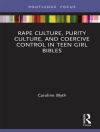In 1497, explorers from the confident world of Renaissance Europe sailed, under Captain Giovanni Caboto, into what are now Canadian waters. This significant encounter brought into contact two worlds equally ignorant of each other and set in motion a number of events that culminated in the birth of a new nation. The Renaissance, ordinarily thought of as an entirely European-centred phenomenon is ‚de-centred‘ in these eighteen innovative essays. They explore not only how the European Renaissance helped form Canada, but also how more significantly the experience of Canada touched the Renaissance and those who first came to the shores of North America. Representing a range of disciplines, including literature, anthropology, biology, history, linguistics, and anthropology, this work re-thinks traditional notions of Canada and of the Renaissance. The essays examine both the interaction between the two worlds as well as the ways that this interaction has traditionally been interpreted. As distinct from the rapid transformation of South and Central America, the focus is on the slower northern experience, questioning the European monopoly on history, politics, and science, as well as the misrepresentation of Canada’s Aboriginal peoples. Originally presented at a 1996 conference at the Centre for Reformation and Renaissance Studies, University of Toronto, these essays provide a wealth of new information and a variety of new perspectives on the collision of the Old World with the New.
Carolyn Podruchny & Germaine Warkentin
Decentring the Renaissance [PDF ebook]
Canada and Europe in Multidisciplinary Perspective 1500-1700
Decentring the Renaissance [PDF ebook]
Canada and Europe in Multidisciplinary Perspective 1500-1700
Dieses Ebook kaufen – und ein weitere GRATIS erhalten!
Sprache Englisch ● Format PDF ● Seiten 352 ● ISBN 9781442673762 ● Herausgeber Carolyn Podruchny & Germaine Warkentin ● Verlag University of Toronto Press, Scholarly Publishing Division ● Erscheinungsjahr 2001 ● herunterladbar 3 mal ● Währung EUR ● ID 6570172 ● Kopierschutz Adobe DRM
erfordert DRM-fähige Lesetechnologie












